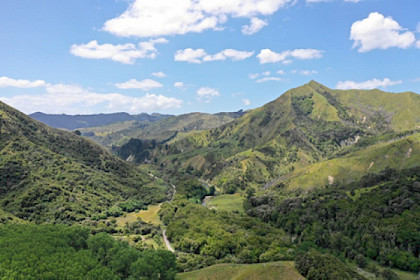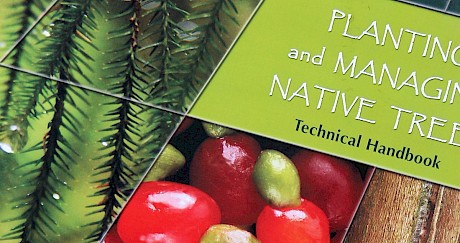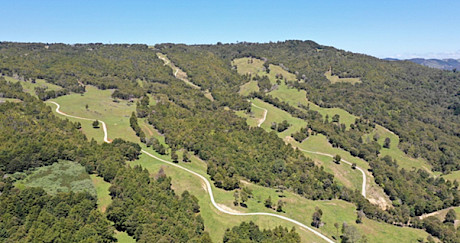Waikereru Ecosanctuary Seed Island ProjectProject Status: Current
Introduction
The second year of planting seed islands at Waikereru Ecosanctuary was undertaken in June 2023. This is a joint project involving Tāne’s Tree Trust, the Longbush Ecological Trust and other partners. The Waikereru Ecosanctuary is over 100 ha of mostly regenerating hill country adjacent to the Longbush Reserve in the Waimata River valley, approximately 10 km north of Gisborne.
The project comprises several components with our main role in setting up a demonstration area of planted “seed islands” of selected native trees and shrubs to rapidly increase biodiversity, targeting gaps of various sizes within the regenerating kanuka. With recent damage to the Tairāwhiti region and similar steep marginal hill country, this project aims to provide landowners with options to speed up succession of kānuka shrubland into a diverse native forest to mitigate ongoing impacts of climate change, biodiversity losses and restoration of waterways.
Concept of seed islands
Establishing ‘seed islands’ across landscapes is a method for large-scale establishment of native forest. It is a pragmatic and cost-effective option, given the high cost of planting natives ($20,000 or more per ha), and the impracticality of intensive blanket planting on a large scale. The aim is to plant intensively managed small groves of native trees and shrubs to provide greater diversity of wind- and bird-dispersed seed across the wider regenerating landscape such as at Waikereru Ecosanctuary.
This allows for the re-introduction of a range of native tree and shrub species that were once common in the area and will help accelerate the regeneration process to a complex high forest with a diverse mix of species. Seed islands will become like stepping stones, attracting birds to roost, feed and fly between groves and assist in spreading seed across the wider regenerating or planted landscape. This concept works with nature, enlisting the help of birds and wind as agents of seed dispersal. For further information on the concept of seed islands refer to Tāne’s Tree Trust Factsheet 2022 – How to establish ‘seed islands’ of natives.
Work to date
Over the first year, project partners have completed a survey and mapped the landforms to provide a context for monitoring natural regeneration and establishment of a network of seed islands. A network of permanent plots to monitor natural regeneration has been established and a comprehensive botanical survey completed. Pest animal control (both browsers and bird predators) and selective weed control is ongoing as necessary to support the regeneration.
In addition to the 20 seed islands established in the first year, a further 11 seed islands have been planted by Ecoworks New Zealand Ltd in Year 2, bringing the total number of native trees and shrubs planted to over 1000. Seed islands have been planted within the regenerating kanuka stands with the selection of sites aimed at comparing survival and early growth within three categories of sites:
1. Natural canopy gap – open grass site with surrounding edge kanuka; 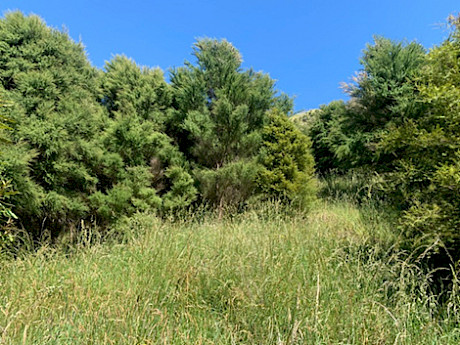
2. Partial shade gap – a light covering of scattered kanuka within the plot; and 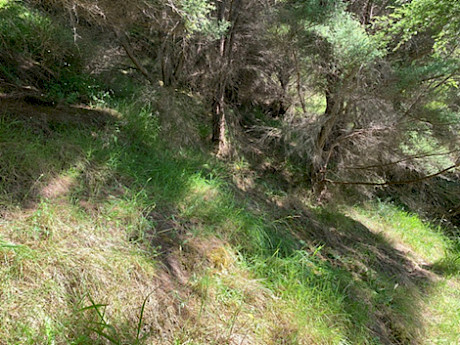
3. Dense shade – planted natives within overhead canopy of kanuka. 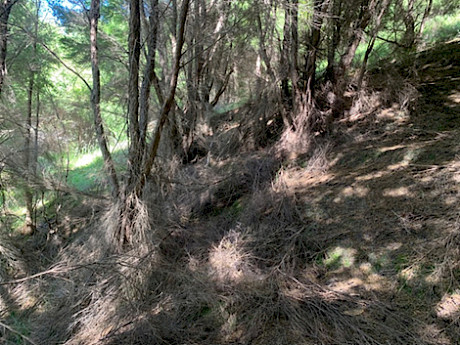
Gap size was governed by the natural openings in the kanuka dominated shrubland with 30-100 seedlings of a mixture of tree and shrub species planted randomly within each seed island to provide a diverse local seed source to supplement the kanuka.
Seedlings were supplied from the local Native Garden Nursery funded by Trees That Count. The site has been registered as a planting site by Trees That Count and early survival and growth are being monitored. Baseline measurements were completed soon after planting in mid-2022 and mid-2023.
Shrub and small tree species planted included ngaio, fivefinger, karamu, kohuhu, wharangi, lacebark and wineberry. Planted tree species included kowhai, rewarewa, titoki, puriri, tōtara, kahikatea, tanekaha, northern rata, black beech and kohekohe.
Preliminary assessment
Year 1 seed islands were remeasured in August 2023 and indicate excellent survival of planted native shrubs and trees within all seed islands. Tairāwhiti did not experience the usual summer drought during the 2022/23 period and this is likely to be a contributing factor to the good performance of planted natives.
When comparing the three site types, the best height growth was in the seed island located within partial kanuka shade. Most seedlings had doubled in height 12 months after planting. Puriri in particular had grown over 1m in height within the first year.
Despite deer fencing of the property and the ongoing pest animal control programme, a small number of goats and deer have resulted in some browsing of highly palatable planted natives such as kohekohe.

